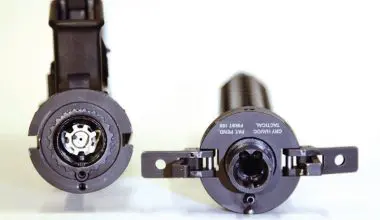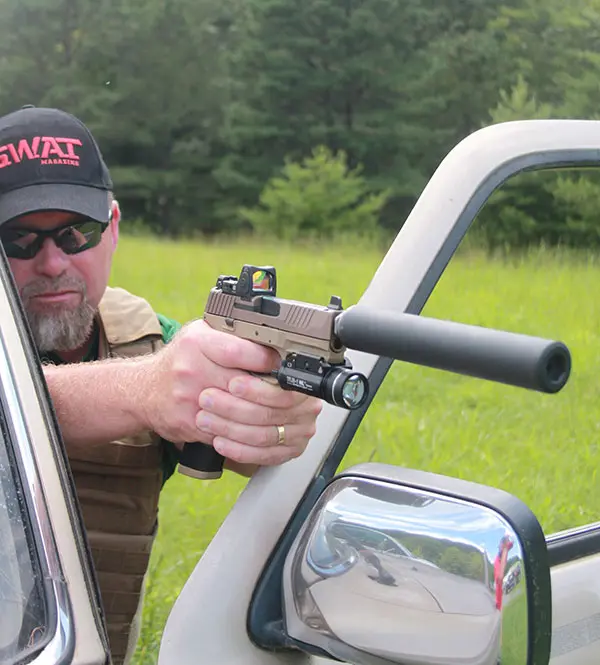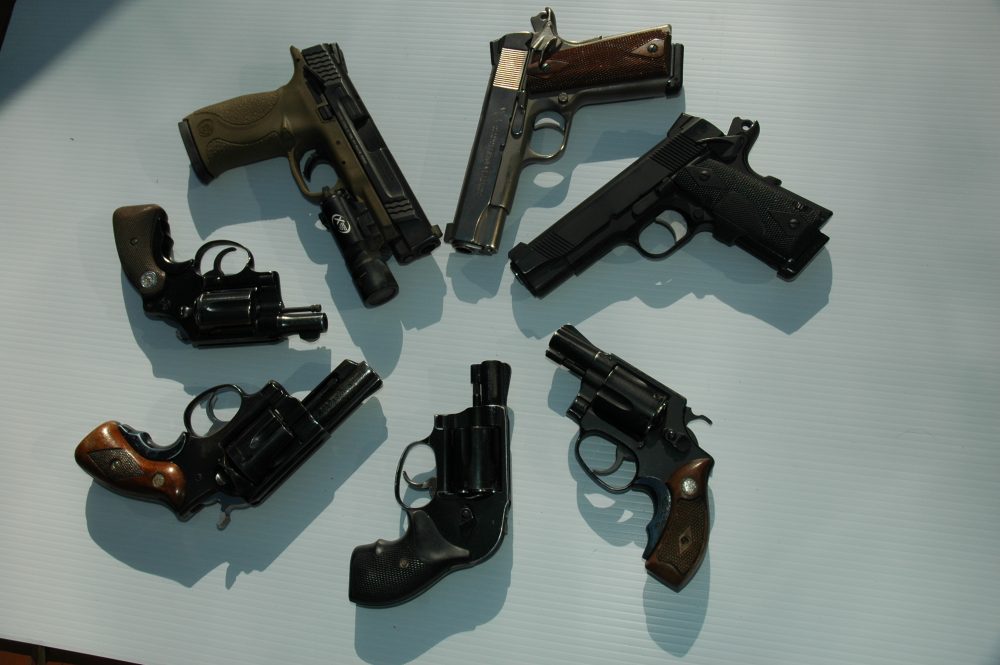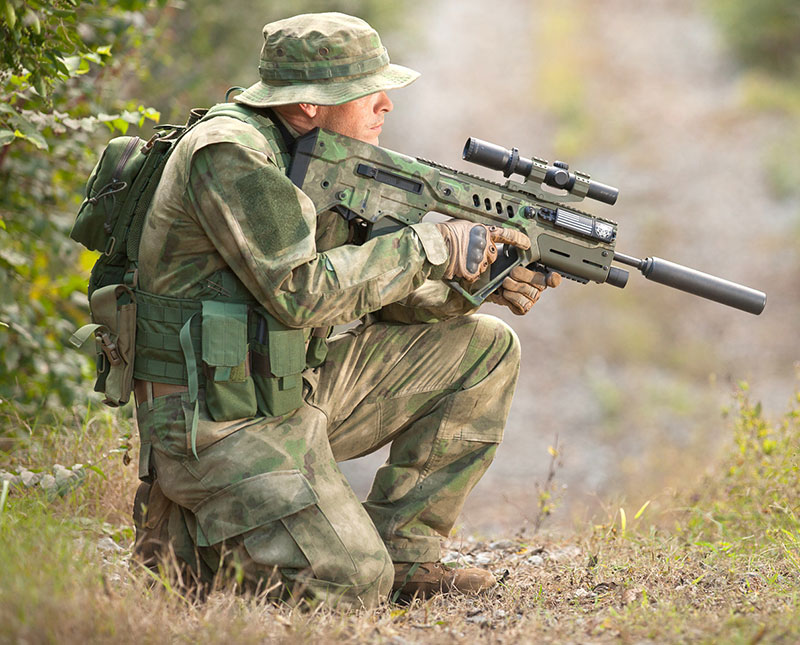
When I traveled to Israel on a counterterrorism project, I rendezvoused with the commanding officer of a military counterterrorist unit at a relative’s home in Jerusalem. He was one of three IDF personnel I had trained with while attending a GSG 9 counterterrorism conference in Germany that hosted members of ten other nations’ hostage rescue teams.
“G” had just returned from an operation and he showed me his Galil SAR and other pieces of military equipment. He explained that after every deployment’s thorough military debriefs, he and others in his unit met with industry reps to recommend changes and upgrades to their weapons and equipment. This close relationship with scientists and engineers often resulted in a good gear item becoming a near-perfect piece of equipment that enhanced his soldiers’ operational efficiency.
Table of Contents
IWI USA
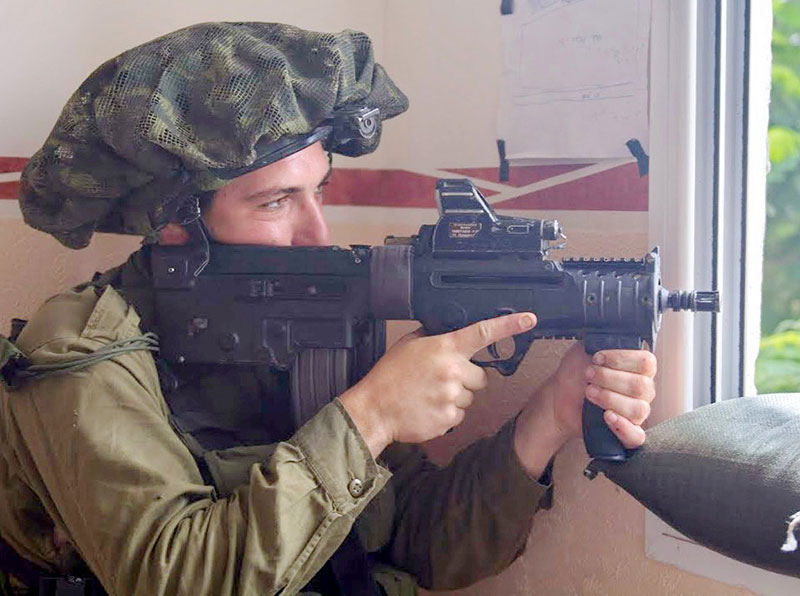
Fortunately, this positive “can do” attitude has been exported to the United States by Israel Weapon Industries (IWI), manufacturer of the Tavor 21 SAR rifle. By listening to American end users, IWI has virtually Americanized its excellent and battle-proven Tavor 21 SAR Bullpup by transforming it into the more advanced X95.
The latter version could be considered a Generation 2 Tavor and, knowing the Israeli reverence for “necessity, the mother of invention,” future platform changes and innovations are sure to come.
In 2005, the Israeli government decided to spin off and privatize the small arms division of IMI and Israel Weapon Industries (IWI) Ltd. was born. Under Vice President Michael Kassnar’s leadership, IWI’s USA headquarters was established in Harrisburg, Pennsylvania.
In addition, Kassnar and his team have been responsible for many of the changes that resulted in the X95, pushed for a .300 Blackout (BLK) version, and established excellent training programs.
X95
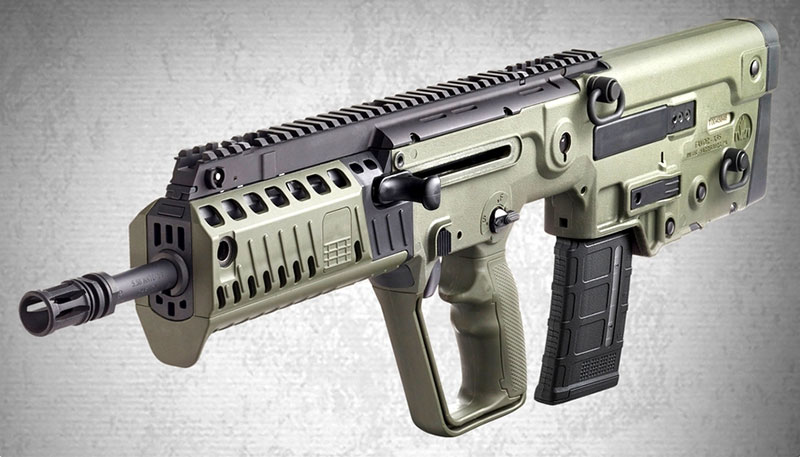
Boxed, the X95 arrives with a 30-round PMAG magazine, removable sling swivels, sight adjustment tool, cleaning kit, cable lock, manual, and documents. Suggested retail price is $1,999.
Options and parts include 9mm conversion, .300 BLK conversion, flashlight holder, slings, vertical foregrip, and pistol grip.
As S.W.A.T. readers know, a bullpup (BP) rifle places the magazine and firing mechanism behind the weapon’s trigger guard, resulting in a relatively long barrel with a short overall length. Barrel length is critical for velocity-dependent 5.56x45mm, and it has a primary effect on bullet lethality.
IWI BPs are extremely versatile. The IDF (Israel Defense Forces) is very mobile and often fights from the confines of vehicles, engages in urban close-quarters fighting, and frequently finds itself in surrounding deserts requiring long-range fire. The two BPs that have been in the IDF’s inventory for 16 years are ideal for the varied battlefield conditions the Middle East presents.
Of course, short barreled and maneuverable long guns are ideal for jungle fights as well.
Like American soldiers, Israeli special forces personnel prefer even shorter-barreled X95s. The 12.9-inch barreled Micro T21/X95 are very popular with these combatants.
The single-fire-only X95 is available in five different models in Black, Flat Dark Earth (FDE), and OD Green conflict environment colors.
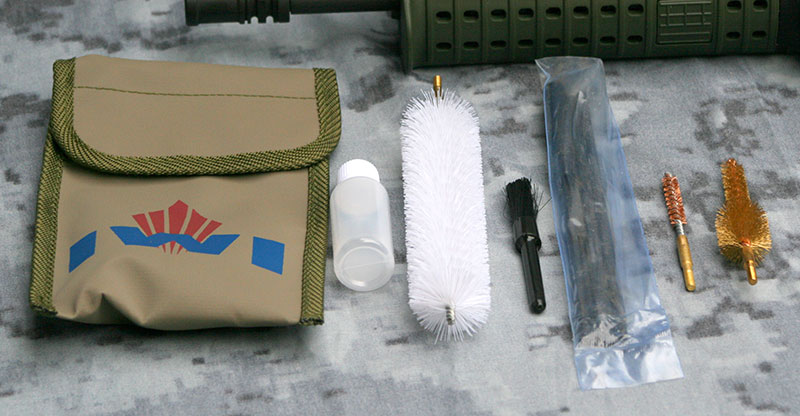
Calibers offered are 5.56x45mm, .300 Blackout, and 9mm Parabellum. The .300 requires a barrel bolt change and the nine involves that too, plus a blowback system, magazine, and magazine well adapter. The 5.56 can be acquired with 16.5- and 18.5-inch barrels, while the 9x19mm features a 17-inch tube, and the .300 BO launches from a 16.5-inch runway, which is the most popular length acquired by private citizens and police. In its sweet 16 configurations, overall length is 26.25 inches.
Empty and without optical sight, it weighs 7.9 pounds. With a two-inch longer barrel that substantially affects wound ballistics, the X95 is nearly seven inches shorter in overall length than an M4 carbine with a the 14.5-inch barrel.
The most salient changes from the T21 SAR that the X95 has undergone are:
- Improved sear mechanism with five- to seven-pound trigger.
- Removable T21 pistol grip and trigger guard, which can be replaced with a more traditional AR-15 pistol grip and trigger guard with a less acute grip angle.
- Bilateral magazine releases located forward of the trigger guard.
- Shorter charging handle relocated above trigger. Charging handle can be moved to rifle’s opposite side.
- Lower profile bolt-release button situated behind trigger guard.
- MiL-STD rails located on the forearm’s 3, 6, and 9 o’clock positions.
- Removable rail covers.
X95 ATTRIBUTES
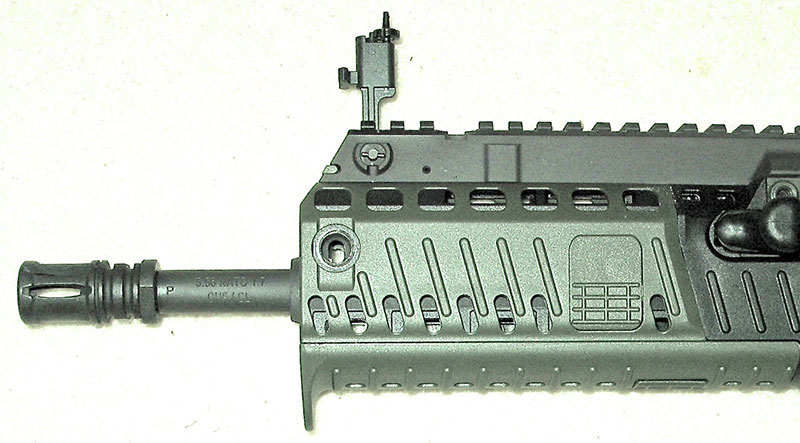
At the muzzle, a conventional birdcage flash suppressor crowns the barrel. The military ordnance chrome-moly-vanadium alloy cold-hammer-forged barrel has a 1:7 right-hand twist with six grooves, which will handle both light and heavier projectiles.
The dorsal flattop rail dominates three-quarters of the rifle and permits a wide range of optic positioning, which is the primary sighting system that is backed up by a set of steel sights folded into recesses in the rail. The front-sight post is adjustable for elevation, but the rear peep aperture is fixed. While simple in format, they are an effective backup system.
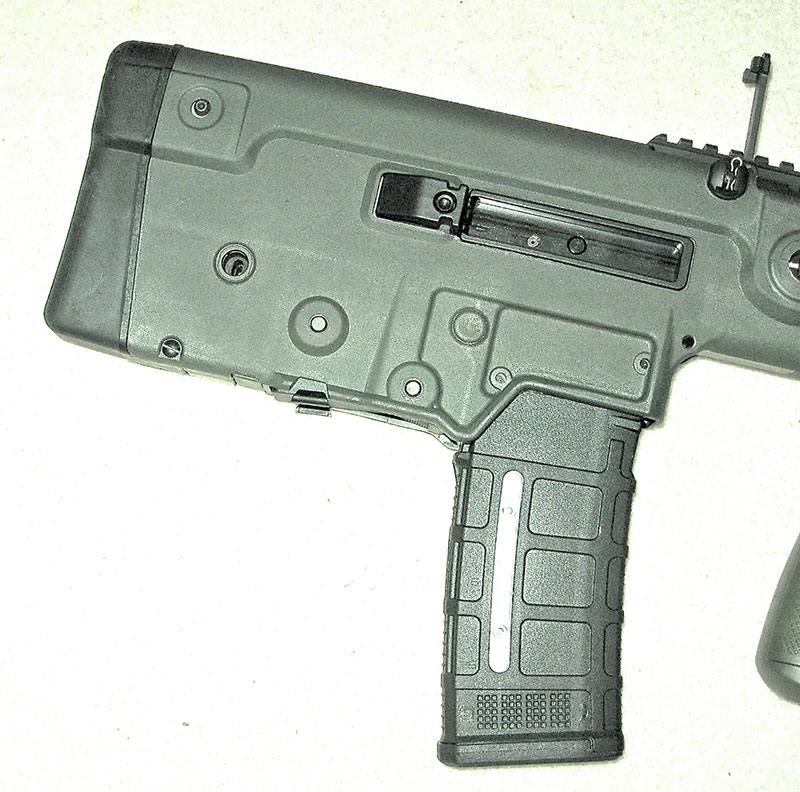
Moving toward its relatively thick black rubber butt pad, we encounter the X95’s operating system. While possibly superfluous because of the 5.56x45mm’s light recoil, the butt pad contributes to the rifle’s overall legal length requirement.
Reversing direction, the gun’s serial number is embedded in the stock, followed by its two ejection ports with spent brass deflectors. From the factory, the left port is covered, but can be switched to the rifle’s opposite side. The deflector protects left-handed soldiers while firing a right-hand configured weapon, but the rifle has to be removed from the shoulder pocket and centered on the chest. Additionally, the shooter’s cheek weld should be moved more to the stock’s rear.
Some BPs have occasionally experienced breech explosions resulting in facial injuries. To prevent potential injury from such a rare occurrence, IWI advised that a protective extension integral to the barrel and that surrounds the bolt head has been introduced to both BPs.
Where possible, the rifle’s chassis is mostly composed of reinforced polymers to save weight and, as mentioned, is available in three different terrain-matching complexions. Before coloring, the receiver is white, so a fourth color might be added that would be suitable for winter warfare ops.
With harsh wet and dry environmental conditions in mind, the X95’s steel components are treated with black oxide. Aluminum components are black hard-coat anodized.
At the ejection port’s six are the magazine well and bolt release. They are located at the piece’s center line and are therefore essentially ambidextrous. In addition to the 30-round PMAG, for rifles sold in restrictive states, a ten-round magazine and other required modifications are available. The X95 accepts most magazines, including Vietnam-era aluminum tubes.
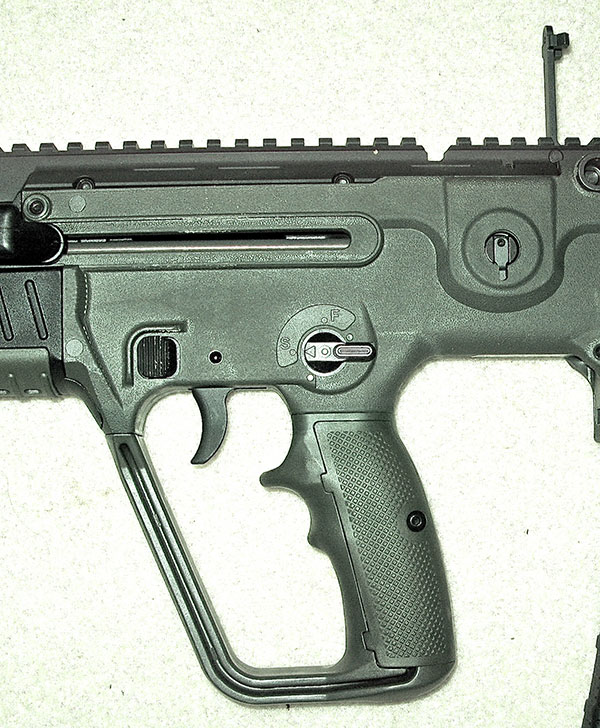
Farther forward, the distinctive parallelogram or knuckle guard shaped SAR trigger guard protects its trigger and houses the prominent selector/safety. This trigger guard is frequently used to brace the stock into the shoulder with the support hand. IWI has also changed the angle of the grip, moving it closer to the vertical. AR fans will find the relatively large bilateral magazine release right where they’d expect it to be–proximate to its trigger.
Prior to its Americanization, the T21 SAR’s unique magazine release was set in front of the magazine well. The newer location better facilitates retaining a firing grip during magazine changes.
A modified and relocated non-reciprocating charging lever resides above the trigger. It can be moved to the weapon’s opposite side.
Beyond the charging lever is the three-paneled forearm. Each panel can be removed by unlocking the spring-loaded locking pieces at the panel’s rear. Doing so permits the shooter to slide the panels off, exposing a 1913 rail where aftermarket tactical accessories can be attached.
AK RESPECT
The Israelis are not above copying concepts from other successful firearms and have a great deal of respect for the “Lion of the Desert,” the Kalashnikov. Both the Galil rifle and the two Bullpups feature a long-stroke AK-type piston.
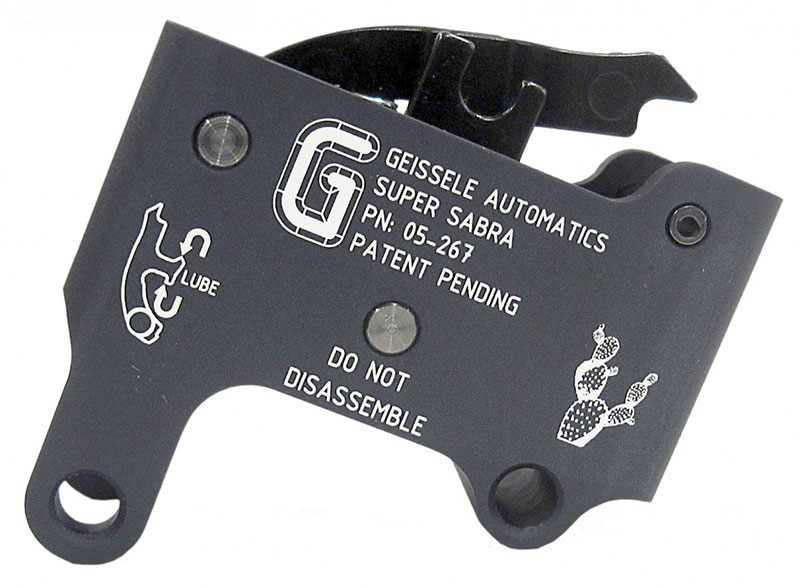
While I was visiting Israel on a Maritime Terrorism research project, a Shayetet 13 (Naval Commando) told me that they dumped every modern military rifle they could acquire into the Mediterranean for several weeks and the only one that worked when fished out of the corrosive saltwater was the AK.
The X95’s gas piston works with a locked breech, firing from a closed bolt system. The bolt carrier group and sear mechanism are located aft of the trigger.
One of the main criticisms of the T21 SAR was its heavy 12-pound trigger, which is characteristic of bullpups because of their more complicated linkage. To allay this concern, IWI teamed up with Geissele Automatics to produce an improved sear mechanism for the X95. Pull weight has been reduced by half, and Geissele has upheld its reputation as one of the finest engineers of enhanced/match drop in trigger systems. My sample’s trigger weighed 5.75 to six pounds.
SIMPLE FIELDSTRIP
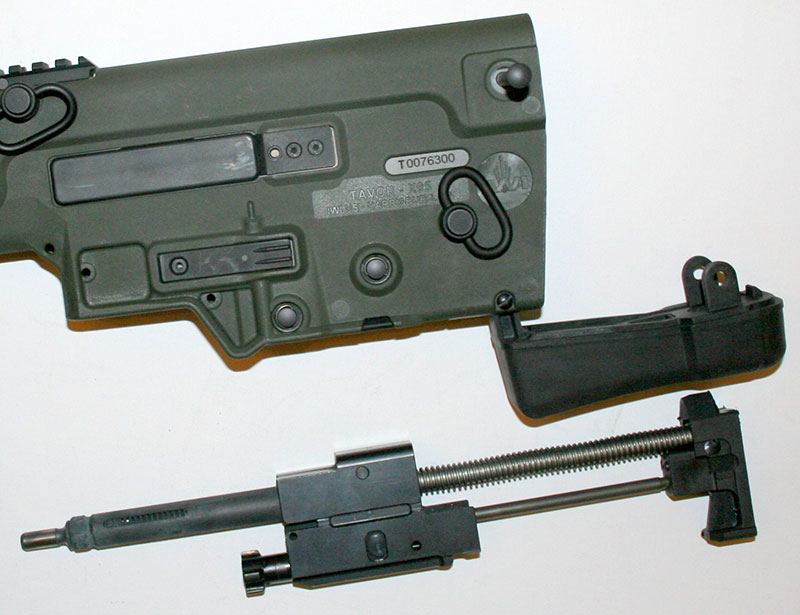
Fieldstripping for basic maintenance is easy. Point rifle in safe direction, remove magazine, and clear weapon. Push butt pin from right to left and open buttstock. Remove bolt assembly. To remove the sear mechanism, push out two retaining pins and slide out. Assemble in reverse order.
The biggest problem with BPs is the area above the trigger that houses the charging lever and ejection ports. If debris penetrates that area, stoppages can occur, and extensive disassembly is required to access the space to clean.
PERFORMANCE
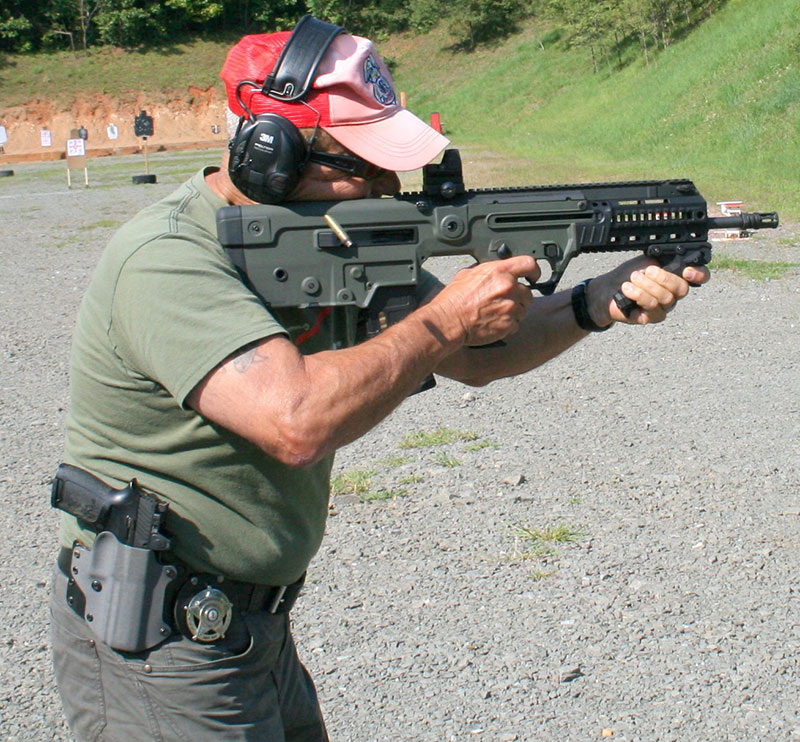
For 100-yard accuracy tests, Trijicon’s Law Enforcement Supervisor Frank Martello, a retired USMC Lieutenant Colonel and sheriff’s training sergeant, graciously offered to help me conduct this phase of the evaluations.
For accuracy, the X95 was topped with Trijicon’s 1-6X24 VCOG optic. It comes with its own integral mount and rings. For close-quarters shooting (CQS), their compact 1X25 MRO with 2.0 MOA dot was chosen. Both scopes are battery powered. I selected ten different loads with bullets ranging from 40 to 77 grains in weight. Trijicon also made its range facility available for the evaluation.
Once the VCOG was zeroed, Frank and I amused ourselves by dropping falling plates and reactive steel targets at 100 yards. The MRO was effective from 100 yards and in, and its binocular target acquisition was superb. It doesn’t take up much real estate on the long dorsal rail and easily performs above its size and weight. The red dot remained in focus regardless of the tempo of fire in spite of the X95’s light muzzle and rear weight bias.
The new sear mechanism and trigger make all the difference. It is a military two-stage trigger with a modicum of take-up before it meets sear resistance and breaks cleanly at approximately half the weight of the T21 SAR. It has a significant effect on accuracy and permits rapid trigger manipulation that produces tight controlled pairs.
Other than the 40-grain loads, International’s 55-grain FMJ was the only other round that eclipsed 3,000 feet-per-second (fps) from the 16.5-inch tube. In spite of its tighter twist, the X95 appears to like lighter, higher velocity bullets for accuracy. For a combat rifle, it delivered excellent groups with all the ordnance put through it and didn’t stumble once.
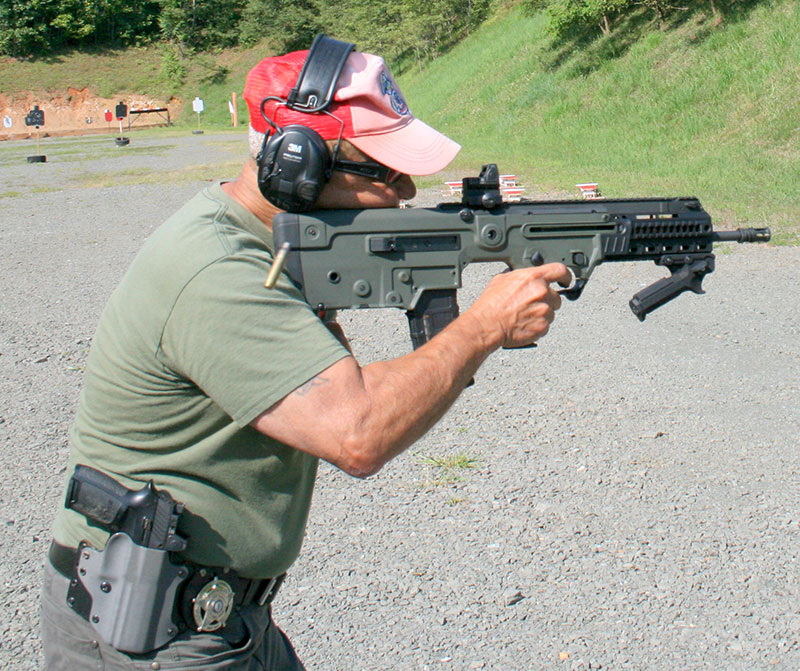
Frank also fired the X95 with one hand and described the experience as like “firing a big pistol.”
For the second round of CQS, I installed a WASP (Weapons Ambidextrous Stabilization Platform) foregrip handguard, and the colonel mounted a red dot RMR on the weapon. They turned out to be an ideal gunfighting combination.
CONCLUSIONS
Israel is a small country and seriously outnumbered. To survive, they must produce better soldiers and multiply their force with superior technology. In spite of inherent BP idiosyncrasies, the T21/X95 are examples of that advanced technology.
The BP’s advantages are being slowly acknowledged by western militaries. Countries that have adopted the IDF’s rifle should be monitored by our military to determine if the BP is a viable weapons system.
Ironically, many private citizens will own a weapon more suitable than our current AR system for urban and mechanized warfare.
SOURCES
IWI US, INC.
(717) 695-2081
www.iwi.us
TRIJICON, INC.
(800) 338-0563
www.trijicon.com
TAVOR X95 PERFORMANCE
| ROUND | VELOCITY (fps) | ACCURACY (inches) |
| Black Hills 60-gr. V-MAX | 2,809 | 1.49 |
| Black Hills 77-gr. MatchKing | 2,675 | 1.49 |
| Cor®Bon 69-gr. HPBT | 2,682 | 1.96 |
| Federal 40-gr. Nosler BT | 3,324 | 1.03 |
| Federal 40-gr. HPV | 3,327 | 1.10 |
| Hornady 75-gr. HPBT TAP | 2,611 | 1.96 |
| International 55-gr. FMJ | 3,047 | 1.13 |
| Remington 62-gr. HP Match | 2,809 | 1.84 |
| Winchester 55-gr. FMJ | 2,894 | 1.17 |
| Winchester 55-gr. JSP Non-toxic | 2,901 | 1.74 |
Three-round groups fired from handheld rest at 100 yards. Average velocities obtained from CED M2 chronograph 20 feet from the muzzle. Temperature 80 degrees.


